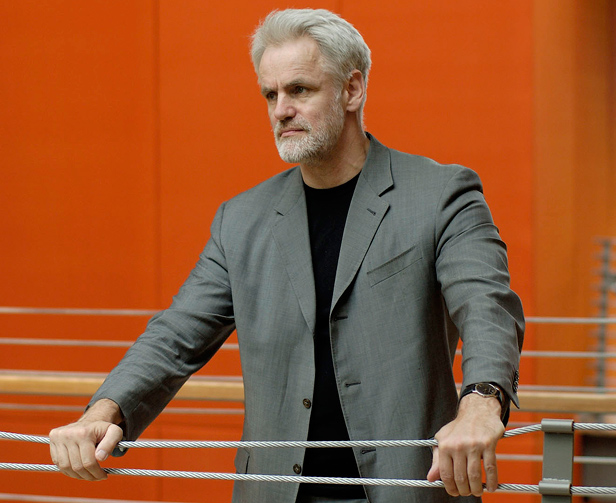The Link Between a Father’s Age and Autism

A team from the company deCode Genetics reports today in the journal Nature that a father’s age determines how many new DNA mutations a child inherits, and that this may explain a recent rise in the number of children being diagnosed with autism.
The chance substitution of one DNA letter for another—a mutation—is what allows bacteria to become resistant to drugs and, over the stretch of ages, the human species to evolve. Such changes can be dangerous in the short term, however, as they may disrupt the function of genes, including those involved in cognition.
In Iceland, where deCode is based, the age of fatherhood has risen sharply over the last few decades. Along with it, the number of mutations being inherited by newborn Icelanders is also rising, says Kari Stefansson, deCode’s CEO.
Technology Review interviewed Stefansson recently in Boston about the results.
TR: Tell me about your latest paper.
Stefansson: We did a study of the mutation rate in the Icelandic population, and what we found is that it’s determined by the father’s age. Hardly anything else influences it. Astonishing. For each added year in the age of the father, there are 2.1 mutations added to the offspring.
The number of mutations is probably proportional to the number of cell divisions [in the testes]. If I remember correctly, there are an additional 13 or 14 cell divisions per year. These are the cells proliferating and generating the sperm. The de novo mutations are formed in the sperm.
So the older you are, the more new DNA mutations your child will inherit?
If you take a 40-year-old father versus a 20-year-old father, the 40-year-old hands off three times as many mutations to his child. And what is extraordinarily interesting is that a 40-year-old father is also three times more likely to conceive a child that becomes schizophrenic than a 20-year-old father. And he is twice as likely to conceive a child that develops autism.
Everyone has been pointing fingers at the age of the mothers. We’ve traditionally been concerned that if the mother is old, the child is going to be born messed up. But the only thing that increases with the age of the mother is the risk of Down syndrome. Everything else is better.
So do you think it’s causal? The age of fathers causes autism?
We can show you very convincingly that the age of the father is associated with increased risk of autism.
Have fathers been getting older?
We took the Icelandic population and asked the question: how has the mean age of fathers at the age of conception of a child changed over the years? The mean age was fairly high during the 19th century and declined during the 20th century. It reached the bottom in 1970, and since then it has been rising steeply. If you measure from the trough to the peak in fathers’ age, the increase in expected mutations is 60%.
Does that mean autism rates were just as high during the 19th century as they are now?
We don’t have the data to answer that. Autistics in the 19th century were probably just called strange.
I guess over the long term, mutations are a good thing and not a bad thing. That’s what allows for evolution, isn’t it?
Yeah. But listen to me. De novo mutations are dangerous for the next generation. They are good in that they generate more diversity from which nature can select. So you are correct there.
I am 42. Should I be worried that if I reproduce now I’ll put my child at risk?
The risk is still a fairly small risk. Also, it isn’t unheard of that you find a biological variant that in one sense is beneficial and in another sense is dangerous.
Does the finding make biological sense? Is it logical that mutations come from the father?
It’s been a long time since I stopped asking whether these things serve any purpose. It just is what it is.
What does this work tell us about how easy it will be to link specific genes to diseases?
When it comes to genetics, all of us are diving into the study of rare DNA variants. And rarity and novelty are synonymous in genetics. Some of them are de novo like the ones in this paper, and some have been introduced in the population during the last generation or two. It looks like these recent mutations are more important in the pathogenesis of common diseases than we thought.
You can just imagine how difficult it is to establish a true association between these extremely rare variants and a disease. It makes the challenge even greater than people thought.
Keep Reading
Most Popular
Large language models can do jaw-dropping things. But nobody knows exactly why.
And that's a problem. Figuring it out is one of the biggest scientific puzzles of our time and a crucial step towards controlling more powerful future models.
The problem with plug-in hybrids? Their drivers.
Plug-in hybrids are often sold as a transition to EVs, but new data from Europe shows we’re still underestimating the emissions they produce.
How scientists traced a mysterious covid case back to six toilets
When wastewater surveillance turns into a hunt for a single infected individual, the ethics get tricky.
Google DeepMind’s new generative model makes Super Mario–like games from scratch
Genie learns how to control games by watching hours and hours of video. It could help train next-gen robots too.
Stay connected
Get the latest updates from
MIT Technology Review
Discover special offers, top stories, upcoming events, and more.